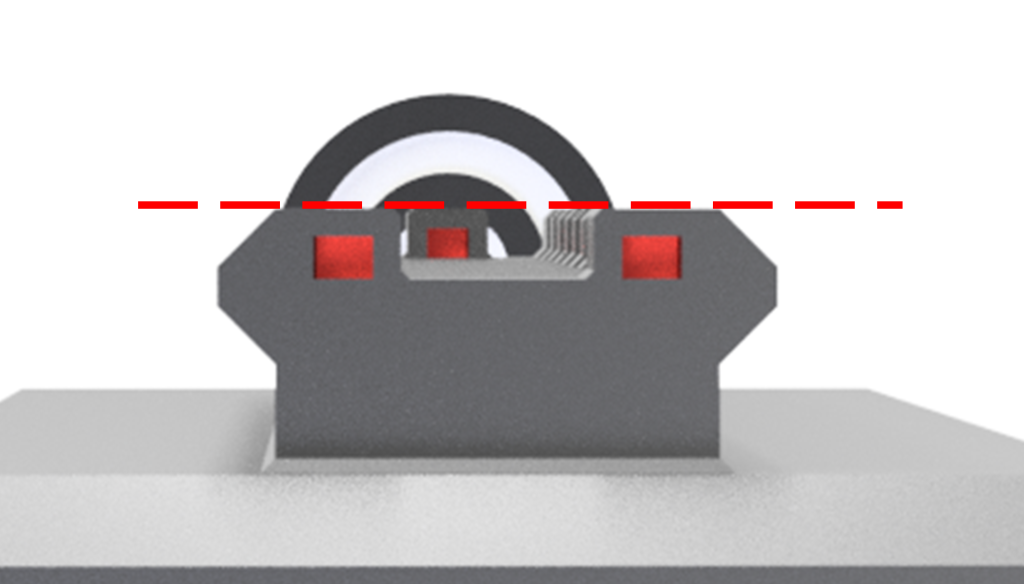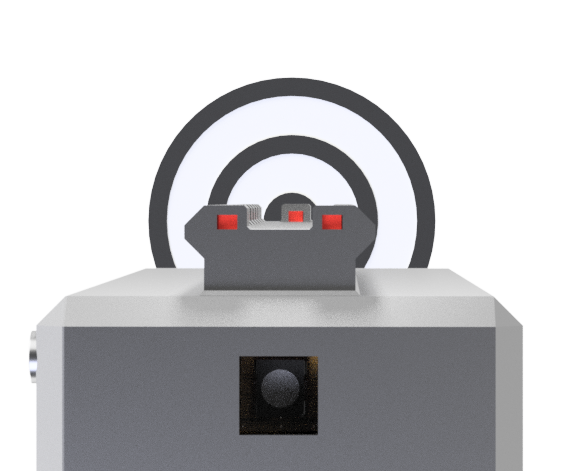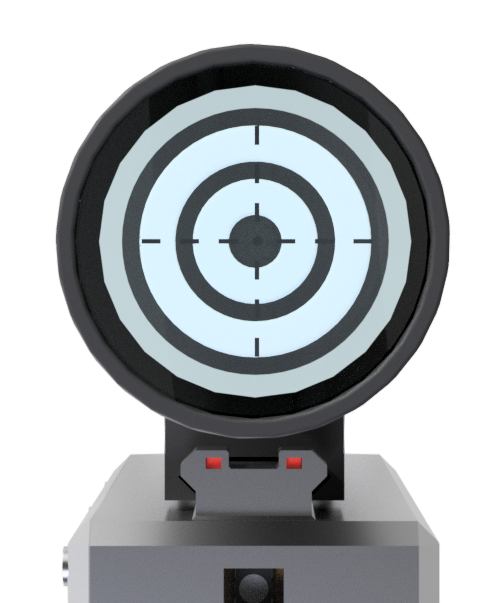
You see your opponent 60 meters away, raise your arm, point the transmitting device at him, press the trigger and… your device makes a sound effect, but the LEDs on your targets head do not flash red. Why didn’t you hit it? This article is intended to show you how to aim correctly.
Unlike normal laser tag devices, our outdoor laser tag system achieves a range of more than 130 meters, depending on the lighting conditions. This means that, when the sun is shining, the range is a maximum of 130 meters. If your target is in the shadows, this range is significantly increased. The range of this system is more than enough to play in the forest. That means: What you can see, you can hit. If you’re not hitting your targets, you should work on your precision.
(By the way, the person in the picture on the left is about 60 meters away)
Iron Sights
Open sights are probably the oldest form of sights. They are purely mechanical, robust and usually do not require any batteries (our sights are illuminated to make aiming in the dark easier).
First a quick explanation of terms: The sight at the front is called the “front sight” and the sight at the rear is called the “rear sight”.


At the beginning, the transmitting device is in a more or less undefined position relative to the target.
I’m showing a theoretical beam here so that you can see that although it appears as if the transmitter is aimed at the target, the beam actually misses the target and passes at the top left. To point the device at your target, three steps are required:


Step 1:
You bring the front sight over your target so that the target (here the dot at the center of the target) is covered by the front sight.
Step 2:
You align the rear sight so that the top edge of the front sight lies on the top edge of the rear sight (the front sight still covers the target). If you see the rear sight and front sight like this, the height is correct, but (in this case) you are still aiming to the left of your target. Step 3 is now required.


Step 3:
You have to position the front sight right between the rear sight so that it is exactly in the middle, i.e. the gap to the left and right of the front sight is the same size. Then you are perfectly aligned with the target.
Here are a few more typical target errors:
Target is hit too low.


Target is hit too far right.

Target is hit too high and too far right.
Reflex Sight / Red Dot

You should not confuse the reflex sight with a laser sight. The red dot you see is only on the lens of the sight and does not illuminate the target.
Generally, players learn to aim with a reflex sight more quickly than with iron sights. This is because you can make fewer aiming errors with the reflex sight, but that doesn’t mean that aiming with a reflex sight is more accurate.
You can aim at least as precisely with iron sights as with a reflex sight.
If you look through the sight at an angle, the red dot moves and stays in the same place above your target (as long as you don’t move the transmitter). It is optically aligned parallel to the axis of the transmitter’s beams.
The advantage of this sight: you will hit where the red dot is. There is almost no possibility of aiming incorrectly with this sight.


Sometimes it is a bit difficult to find the red dot. If you look through the visor at an angle, you won’t see a red dot and you’ll have to find it by correcting the angle in which you look through the visor.
Scope

There is also the option of using magnifying optics. A rifle scope does not increase the accuracy of your transmitter, but it does make aiming easier because it magnifies the target.
However, it is difficult to quickly aim at the target with magnifying optics (especially at close distances).
Once you’ve found the target, there´s not much you can do wrong. Aim the crosshairs at the point you want to hit.


But there are two difficulties here: You have to maintain the correct eye distance from the rifle scope, otherwise the target will not be displayed correctly and you have to find the target first. This is not so easy when the target is at a great distance and the scope has a high magnification.